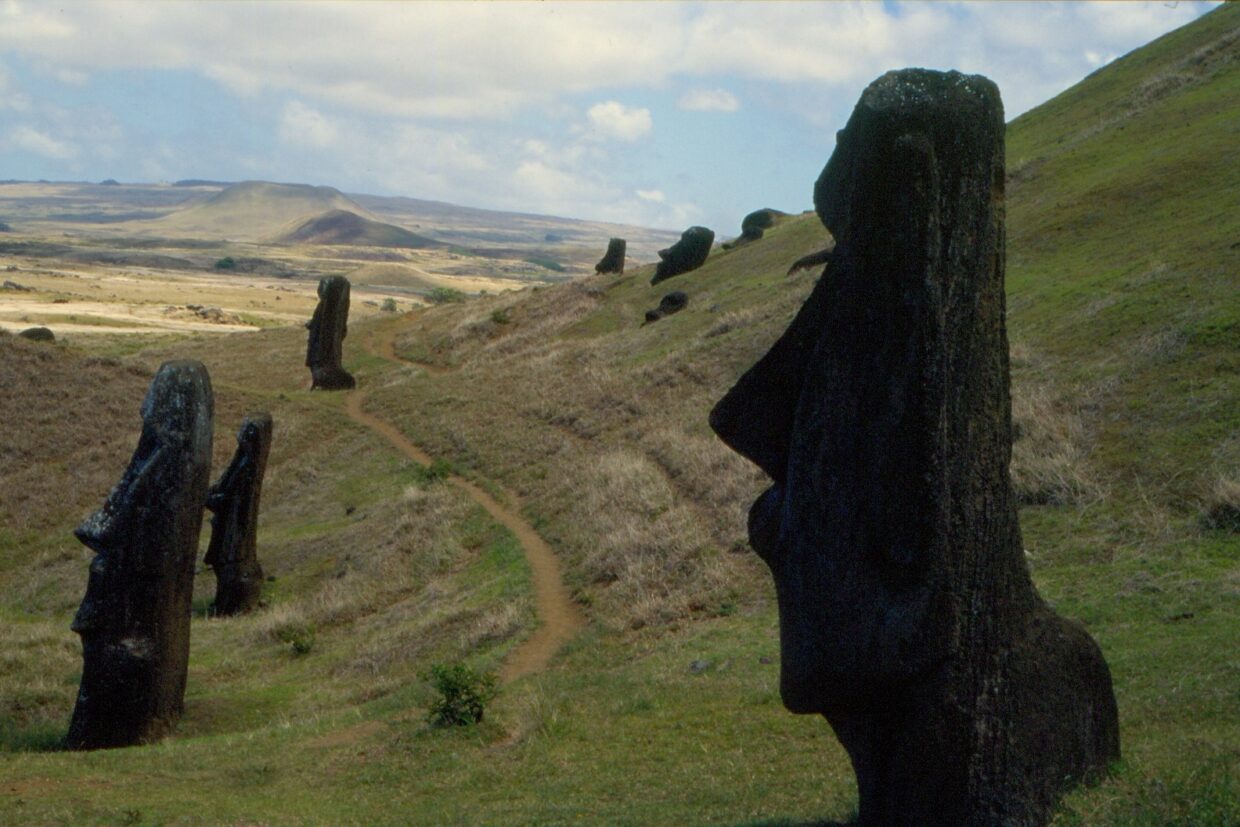Known locally as Rapa Nui, Easter Island is a small landmass of 166 km2 located 3500 km off the coast of Chile with three main inactive volcanic summits. Unlike other subtropical islands, it has a depauperate flora with only 50 native plant species, 8 of which are endemic to the island; two of these, Polystichum fuentesii and the tree Santalum fernadezianum have become extinct over the last 120 years. The lack of diversity is due to its extreme isolation and because it has never been connected to any continental landmass. It was first settled between A.D 800-1200 but by the time Europeans arrived in 1722, most of the forests had been cleared which led to high levels of extinction. One such species which was once widespread was the giant palm Paschalococos disperta thought to have been used to transport the Moai monolithic human figures of Rapi Nui. Today the island is covered by grass with isolated stands of non-native trees and shrubs. Despite the establishment of 68 km2 Rapa Nui National Park, the last vestiges of native plants are still threatened by a combination of introduced species, grazing, fire and tourism.
Region




